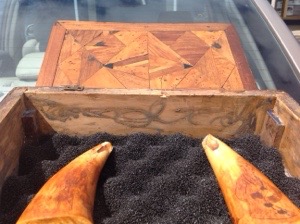 Too often family historians rely mainly on documents to tell the history of the family – names of people, dates of events and places events occurred. But we also need to start looking at images and objects and what they can tell us about the family and the society they lived in.
Too often family historians rely mainly on documents to tell the history of the family – names of people, dates of events and places events occurred. But we also need to start looking at images and objects and what they can tell us about the family and the society they lived in.
There are two types of culture:
- Material culture – looking at things that are actually made by society such as cooking of food, manufacture of goods like steel and changing what is already there like a garden
- Visual culture – using sight or vision in our culture eg photos, comics, films
We need to look at more disciplines than just history to find out about our family history:
- Archaeologists looking at what objects can tell them about society eg convict ruin digs at Ross Female factory and at a convict building in Triabunna at the moment.
- Conservators and curators looking at what a collection of artefacts can tell us about society at that time eg museum display about migrant life in Australia.
A great website for looking at objects from a variety of viewpoints was the History of the World in 100 objects from the British Museum. Look at each object and listen to the podcast about it.
Our first reading for the course was Karen Harvey’s ‘Introduction: Practical Matters’ from History and material culture : a student’s guide to approaching alternative sources (2009, Routledge: London and New York).
This was very heavy going for a retired teacher who had not done formal university study for over 40 years, but this is what I gained from it. The introduction was based more on material culture and we were given a series of questions to think about while reading it.
The reading looked at how objects can be used by historians and what is it we can learn from these objects. It also mentions how a historian’s approach can help those students looking more at material culture. Many people were mentioned in the reading but first was Bernard Herman who has done a lot of studies on material culture in the USA.
He looks at object centred studies and object driven studies. Object centred is looking at the physical attributes of one or more objects. It can also include description of object, deduction about connections between society and object and finally, speculation about why the object is that way. Another name mentioned here is Jules David Prown. Object driven studies is more finding out how people and society have used or made the objects. This will include lots of sources including documents.
It mentions that historians have already been using objects as part of their research especially when looking at:
- Probate records – what are the objects? their value? their history within the family?
- The studies of family homes – how the architecture has changed? use of certain fixtures for protection etc is all part of material culture.
As historians, how do we engage with objects as part of the family history?
- Are we the farmers interested in the science and technology related to the object or,
- a cowman interested in the social sciences and humanities side of an object?
It is here where our senses and feelings come in to play when looking and studying an object as part of our family history. The use of the words farmer and cowman is from Prown mentioned above.
The rest of the book are specific examples of material culture written by different authors looking at objects within their studies.
The image for this post is a whale tooth scrimshaw owned by a member of my family and a whaling captain’s wooden box also owned by the same person.
Readers: How have you used objects as part of your family history?